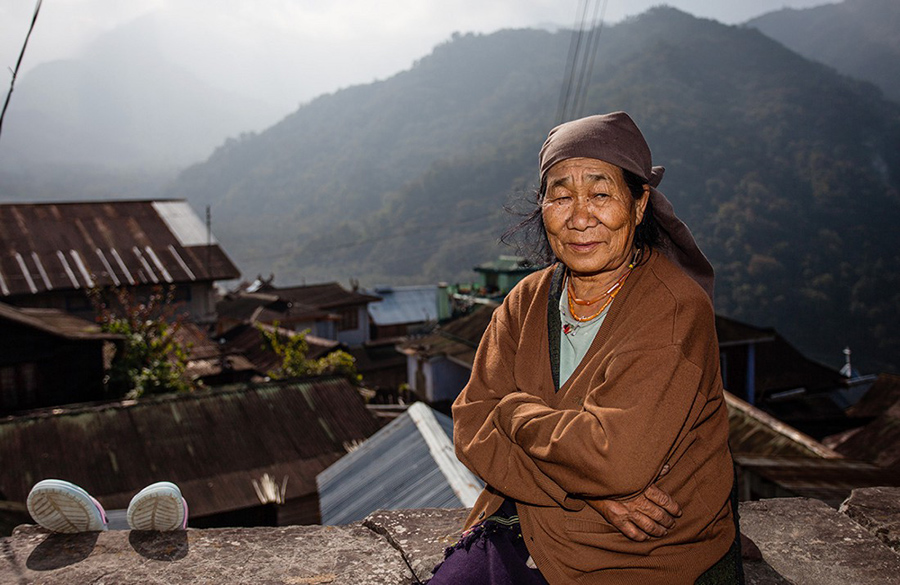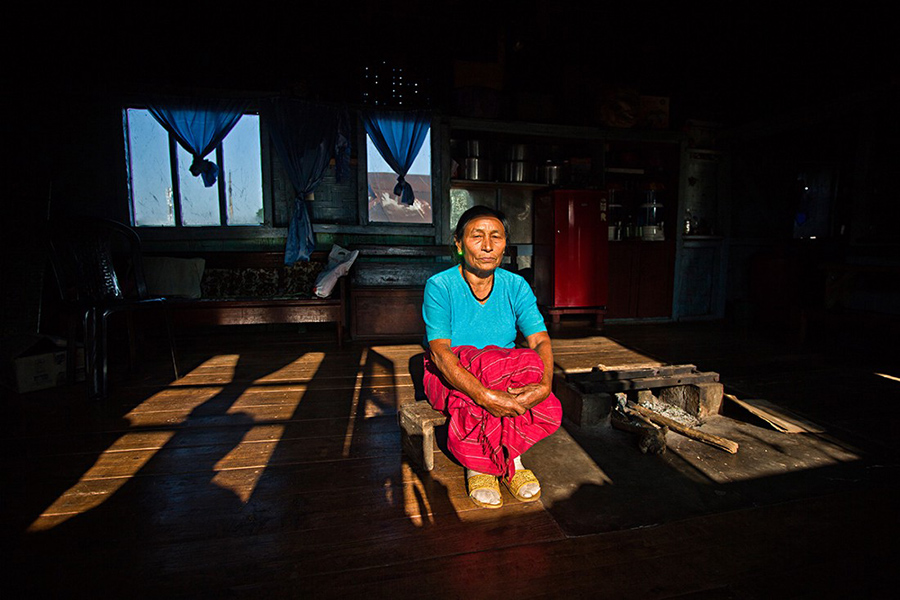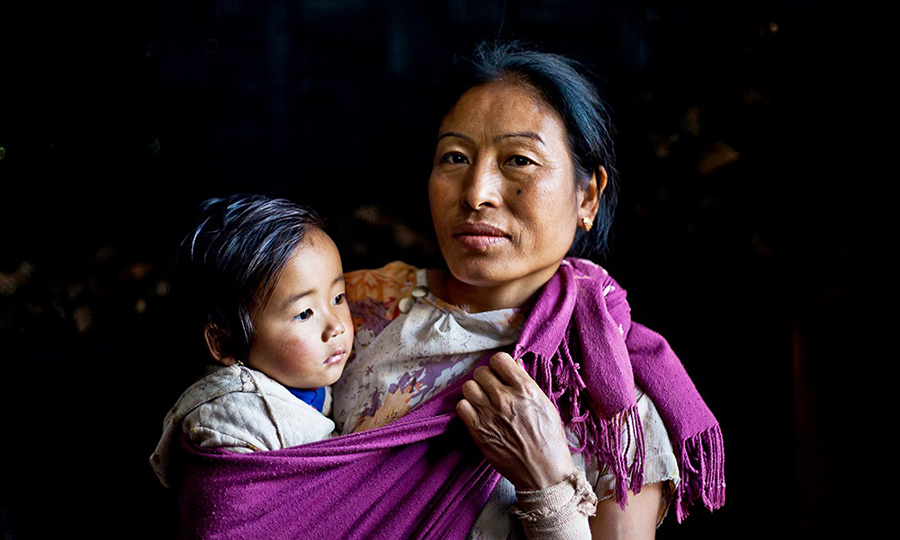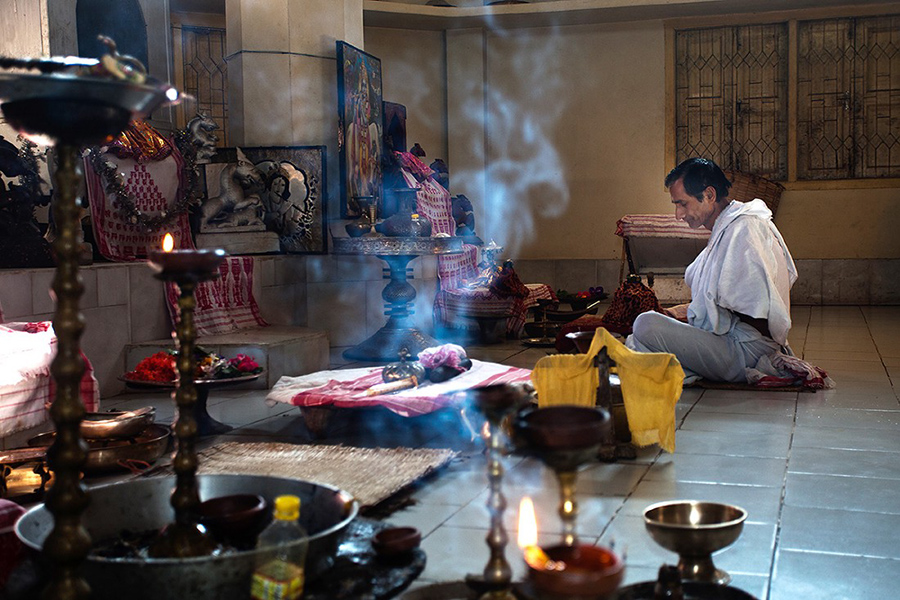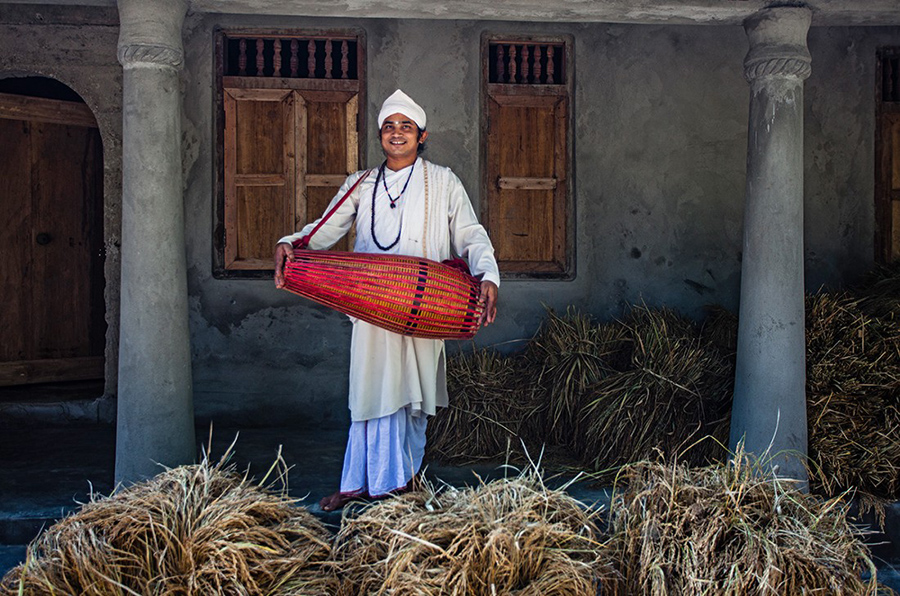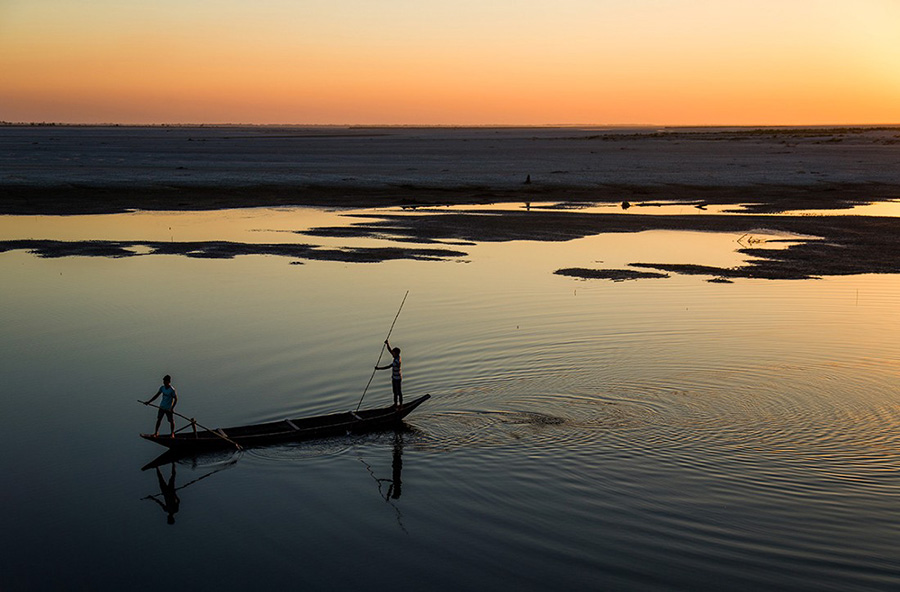Photo-story: rich cultural heritage of North-East India & Hornbill Festival
Originally published on medium.com
Unusual political boundaries have isolated North-East India from rest of the world (and rest of India) for many years. This is perhaps one of the reasons that has allowed this region to retain and celebrate a good part of its indigenous culture without significant influence from outside.
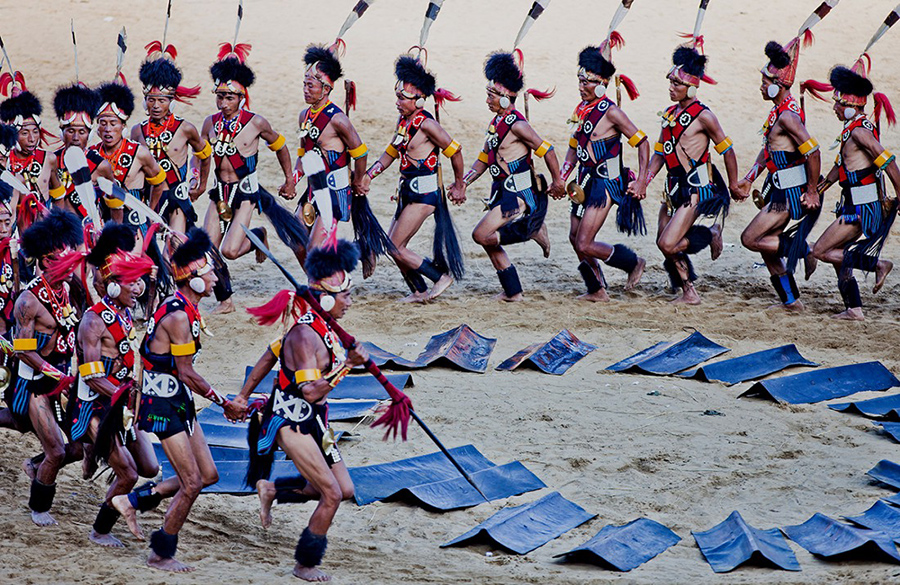
Performances at the Hornbill Festival, Kohima.
The Hornbill Festival in the hill-state of Nagaland is perhaps the most eclectic and elaborate of all the cultural events in the region. It offers a glimpse of North-East India’s rich culture, even though it showcases life and rituals from just one of the seven states in the region. This is a celebration of customs, cultures and everyday life of the seventeen communities that inhabit the hills of Nagaland. For ten days every December, the slopes of Kisama Village reverberate with gentle murmur of folks songs alternating with cries of hunters displaying their skills in the arena.
Every December, we conduct a week long mentored photography tour that offers excellent opportunities to learn the nuances of photographing people and cultures. The tour also helps you experience the rich culture of North-East India from up-close. We travel with a cultural guide having an in-depth knowledge of North-East India, its history and culture. It’s an awesome journey that offers unparalleled photography opportunities and unique people encounters. To be a part of this tour, visit “Photography in North-East India and Hornbill Festival” and find out more details.
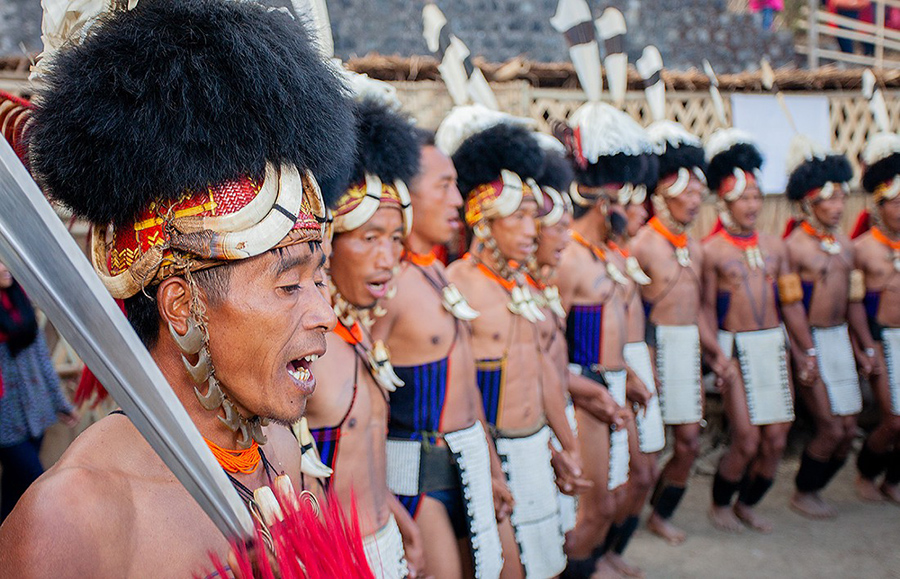
Naga people at a performance during Hornbill Festival.
What makes Hornbill Festival an endearing experience is in the way the festival is not limited to an on-stage ensemble that isolates itself and doesn’t connect with its audience beyond the performance. During the days of the festival, each of the seventeen communities setup their own corner at the festival venue that permits personal interactions between visitors and the performing artists.
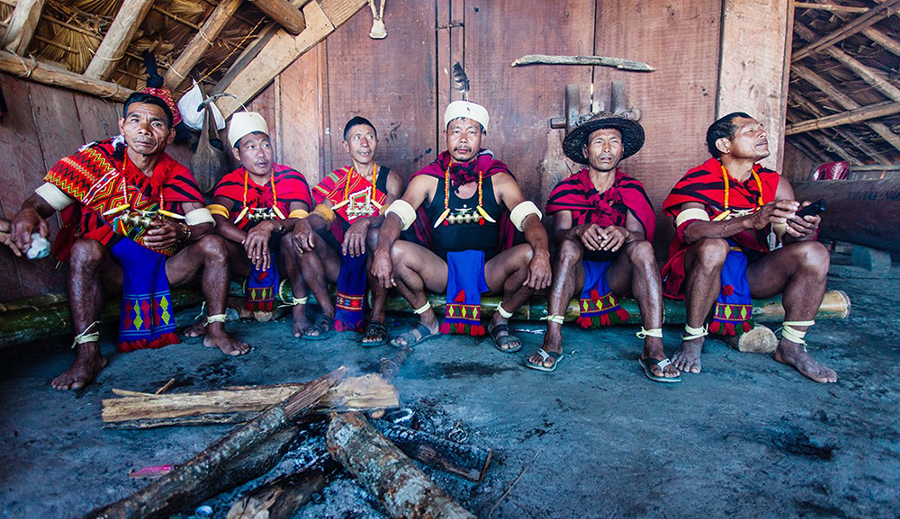
Performers in their morung at the festival venue.
Morungs, roughly translated as dormitories, are places where a community’s performing members come to rest between performances and occasionally conduct small ritual activities. In Naga tradition, a morung is a community building in a village that serves as a dormitory and a place for schooling young men. A morung also doubles up as a place of gathering for the community, from where villagers conduct meetings or announce events in the village.
At the venue of hornbill festival, each community has built a faux-morung that serves as their retiring room between performances. These morungs make an excellent place to interact with performers and get to know about their traditions better. They are also places where you can witness some Naga rituals and performances up-close.
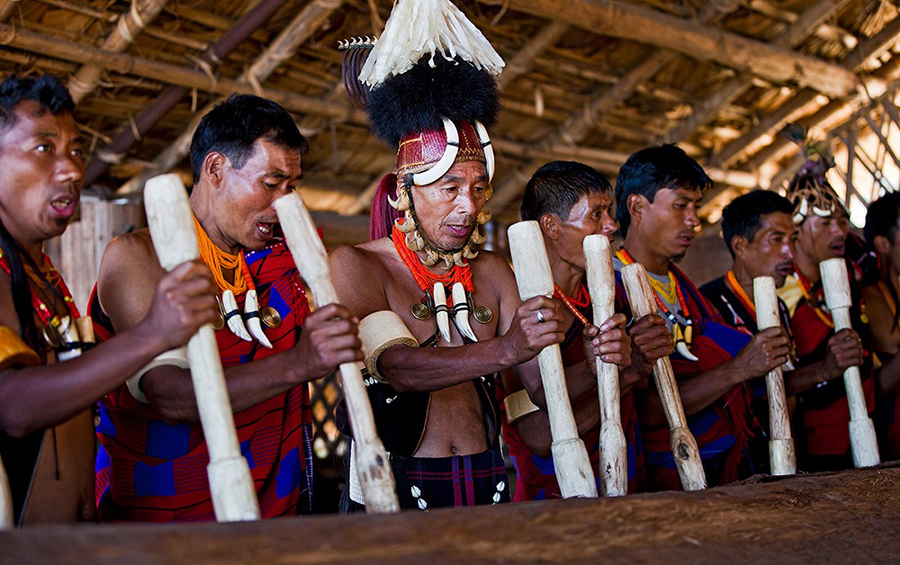
Drummers performing at a morung during hornbill festival.
Events in the village, such as death of a villager or warning about an enemy attack were announced by beating a large log drum in the morung. In some morungs at the festival, log drums installed offer a glimpse of how life may have been in the remote villages of Nagaland in the past.
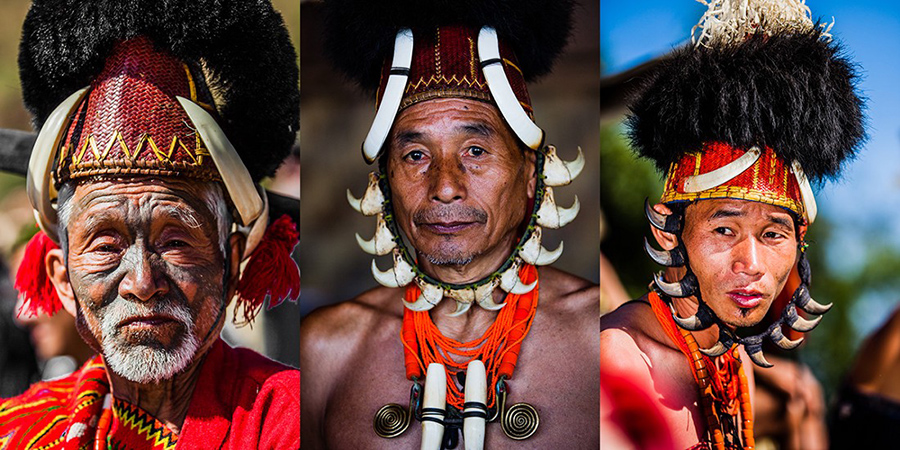
Performers at the hornbill festival.
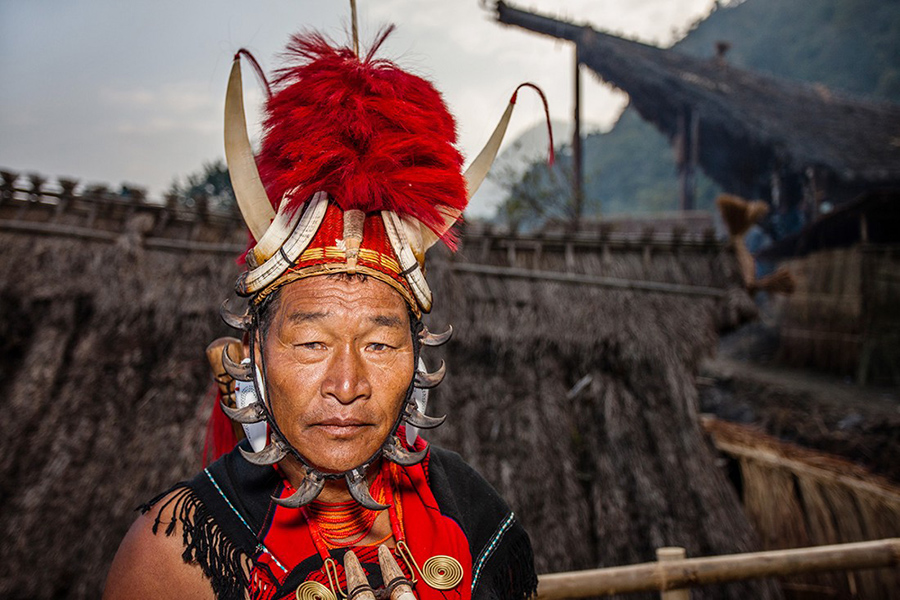
A performed at the hornbill festival with morungs in the background.
Performers at the festival are usually in their best traditional garb. Often, their headgear is of great attraction. Once upon a time people used bird feathers to decorate their headgear, which is no longer seen commonly today.
A visit to Hornbill Festival is also an opportunity to visit villages in the region. Most of Nagaland’s population is agrarian, and paddy is one of the most commonly cultivated crops. Being mountainous, fields are usually terraced and are located in a valley below the village.
A typical Naga village will have a few scores of houses and is often in the middle of wilderness. Although it’s common to see houses built with concrete these years, many of them are structures made with bamboo and other locally available materials.
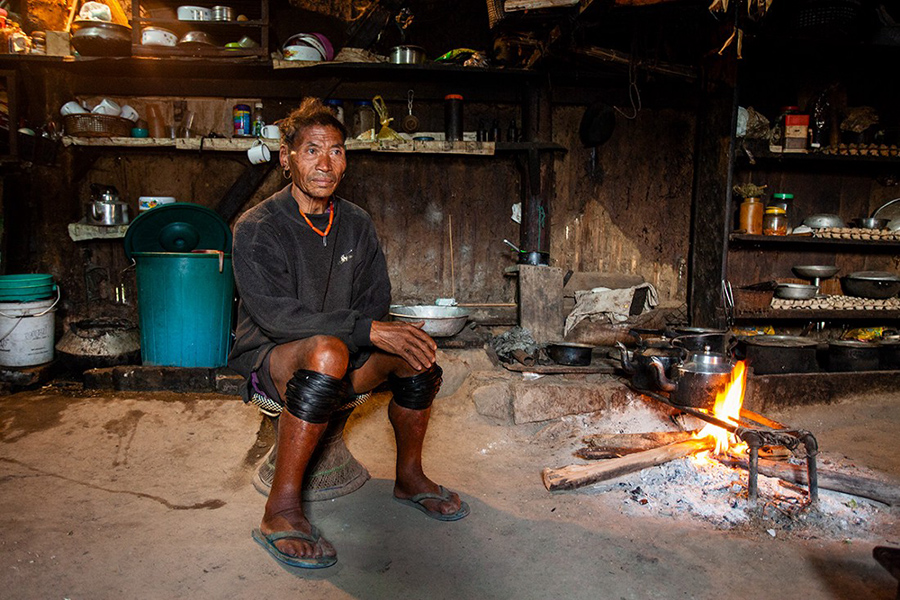
A Naga village chief in his house.
Naga villages have a well established social order led by a village chief. This is a system that continues till date. In the past, new villages were established when an existing village outgrew its ability to feed the population, given the limited area available to grow paddy in the vicinity. This village chief (in the photograph above) left the village where he grew up, set out with a small group of people and established a new village by clearing the forests.
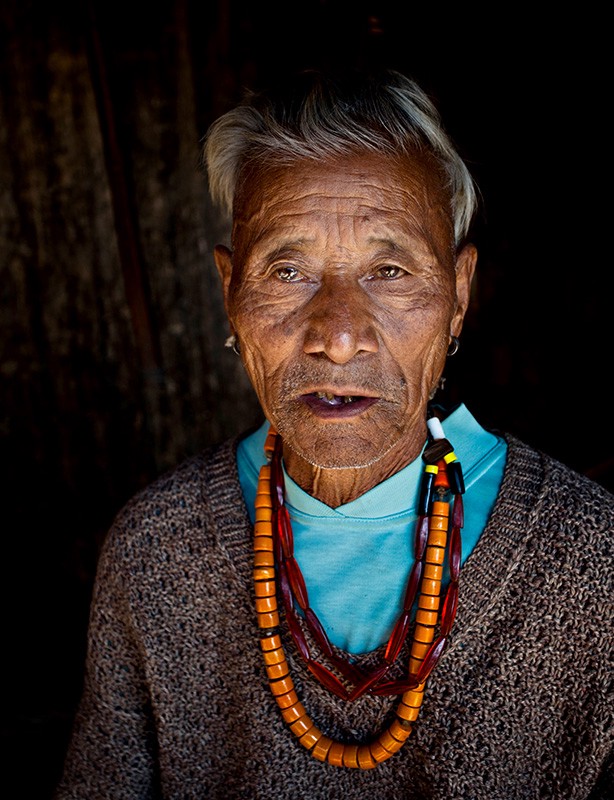
A village priest who performs rituals of pre-christian religious practices
Much of Nagaland today follows Christianity. However, the indigenous religious practices persist in many places. It’s not uncommon to find priests in remote villages who perform rituals and practices before much of Nagaland embraced Christianity.
Majuli and its Vaishnava Monasteries
A stark contrast to Hornbill Festival’s exuberant and colourful atmosphere is a quiet and slow-paced Majuli Island in the plains of Assam. The island, formed by the waters of Brahmaputra River, is the largest river-formed island in the world. More than five hundred years ago, saint Sreemanta Sankardev established Satras, monastic institutions of Majuli that thrive even today.
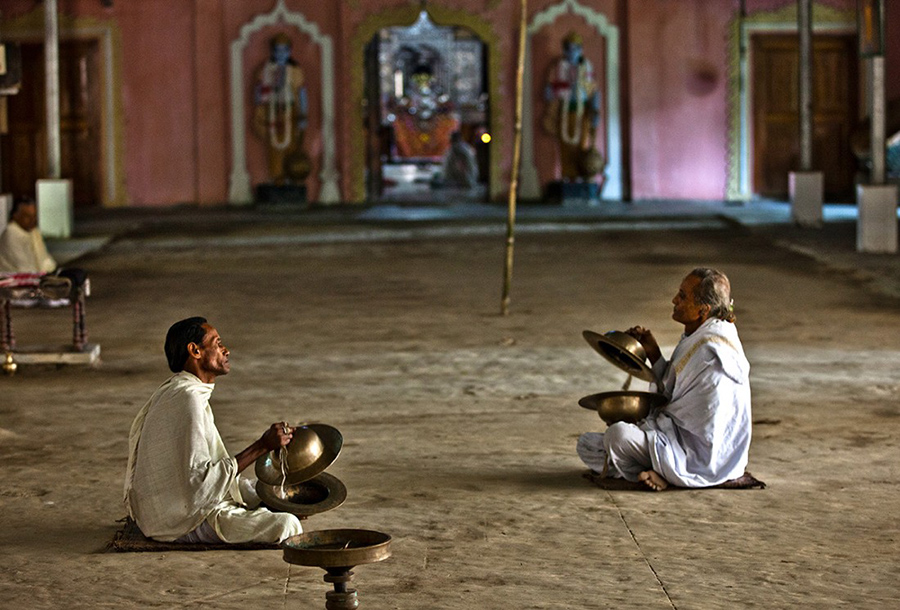
Monks performing daily prayer at a monastery in Majuli.
Sankardev spread his teaching through a tradition of song and dances that continues to be practiced in Majuli today. Daily prayers in the monasteries are an elaborate ritual of singing that can last for more than an hour.
A prayer hall and a sanctum together form the heart of every monastery.
Singing, dancing and performing in plays are integral to a monk’s life. On occasions, villages in Majuli organize festivals that involve singing-dancing celebrations that propagate the messages of Sankardev. Monks of Majuli often travel across the world and invite performers from elsewhere on residencies.
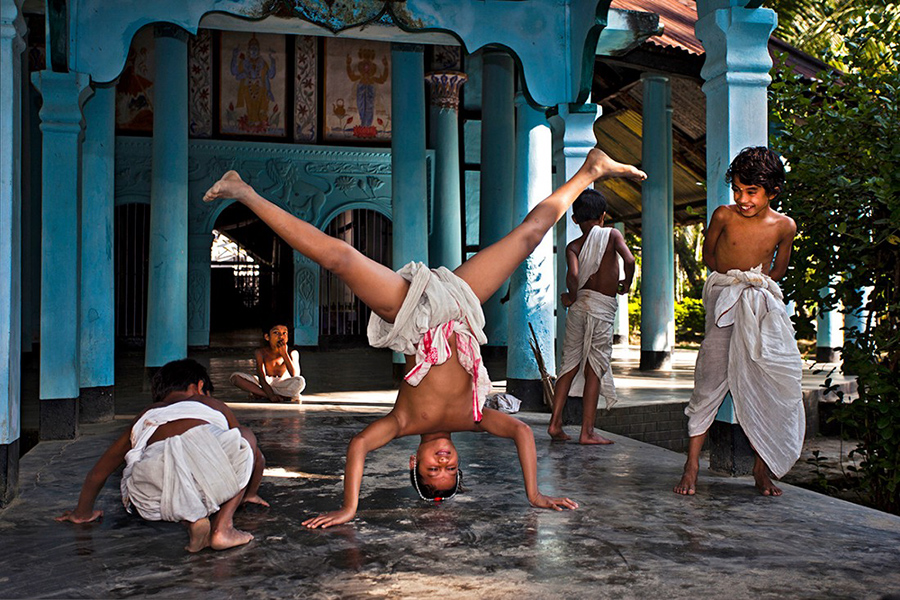
Young monks practicing yoga at a monastery in Majuli
Monks begin at an early age. Parents from across Assam bring their children and leave them at the care of monasteries.
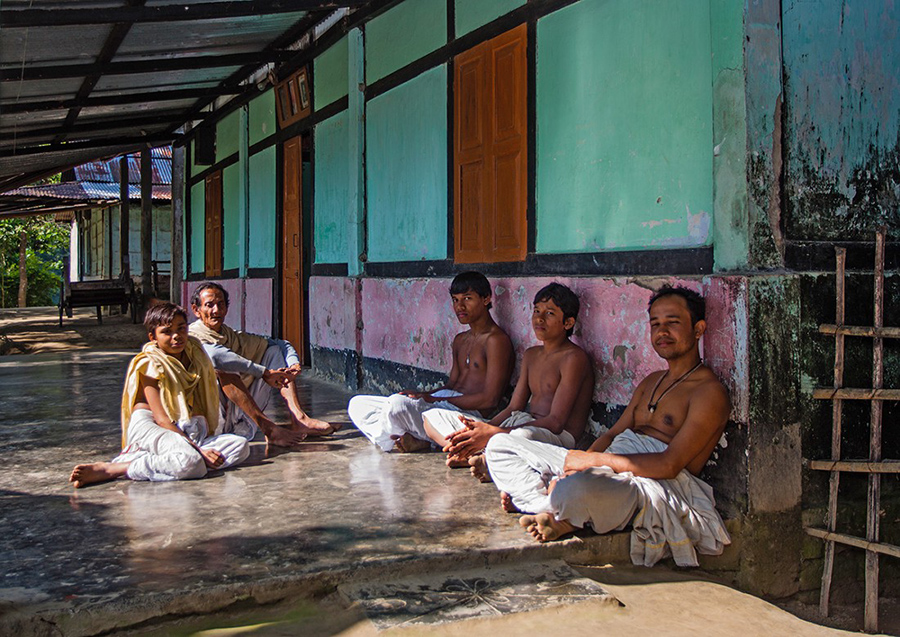
Monks at a monastery in Majuli
The monks usually live in groups of 4–5 sharing a house in the premises of the monastery. Such collective can be loosely referred as monk families. A monk family may even have its own paddy fields in the vicinity of the monastery.
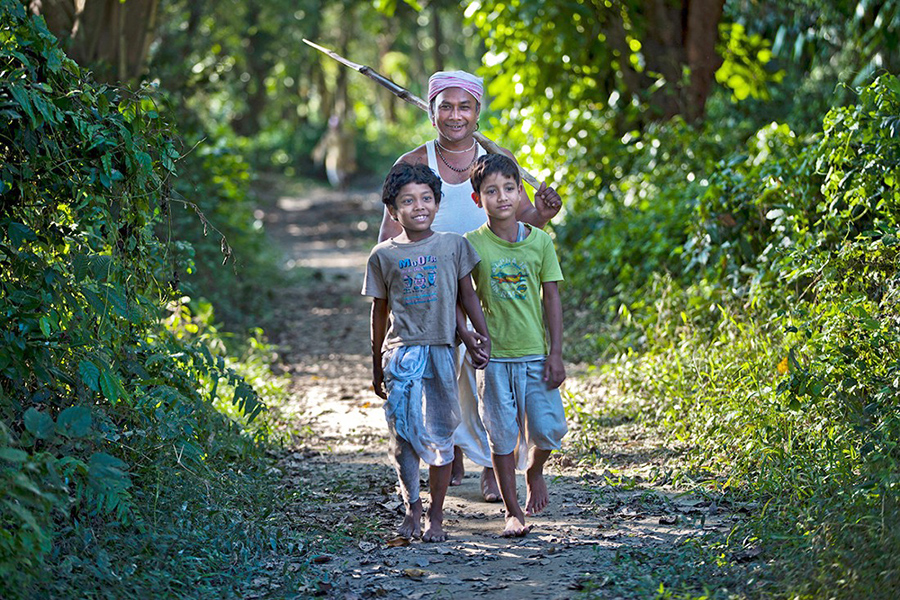
A monk family returning from work in the fields.
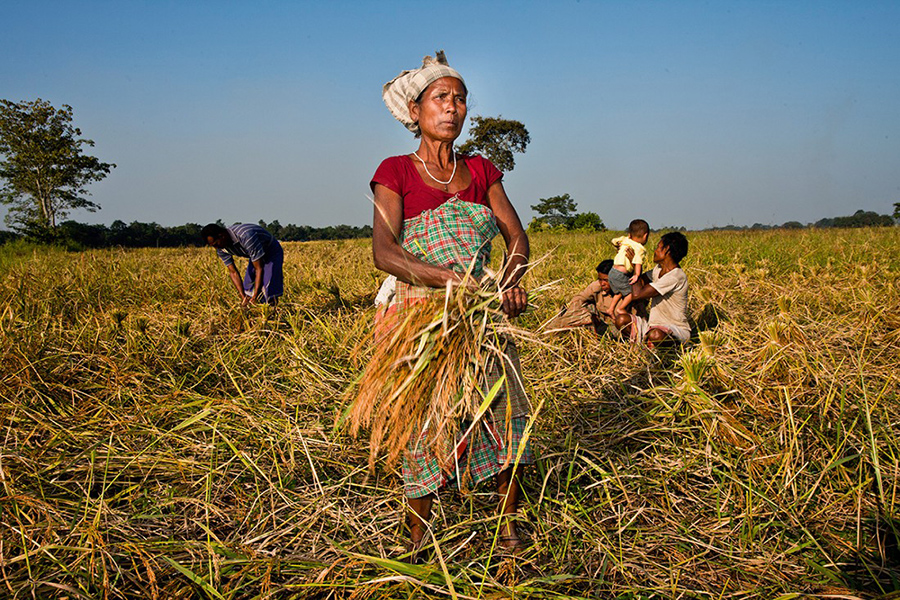
A lady works in a monastery’s fields in Majuli.
December is the harvesting season, when local families of Mising community come to work in paddy fields that belong to the monastery. Nearly all the work is done manually, starting from harvesting to carrying the crop and removing the grains.
Brahmaputra River surrounds Majuli in all directions and defines much of the life in Majuli. Access to the island is by an hour-long ferry ride across the river. Annual floods during the monsoon and retreats in the subsequent months are an important part of Majuli’s way of life.
Every December, we conduct a week long mentored photography tour that offers excellent opportunities to learn the nuances of photographing people and cultures. The tour also helps you experience the rich culture of North-East India from up-close. We travel with a cultural guide having an in-depth knowledge of North-East India, its history and culture. It’s an awesome journey that offers unparalleled photography opportunities and unique people encounters. To be a part of this tour, visit “Photography in North-East India and Hornbill Festival” and find out more details.
